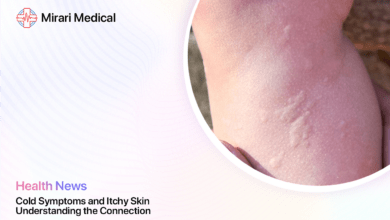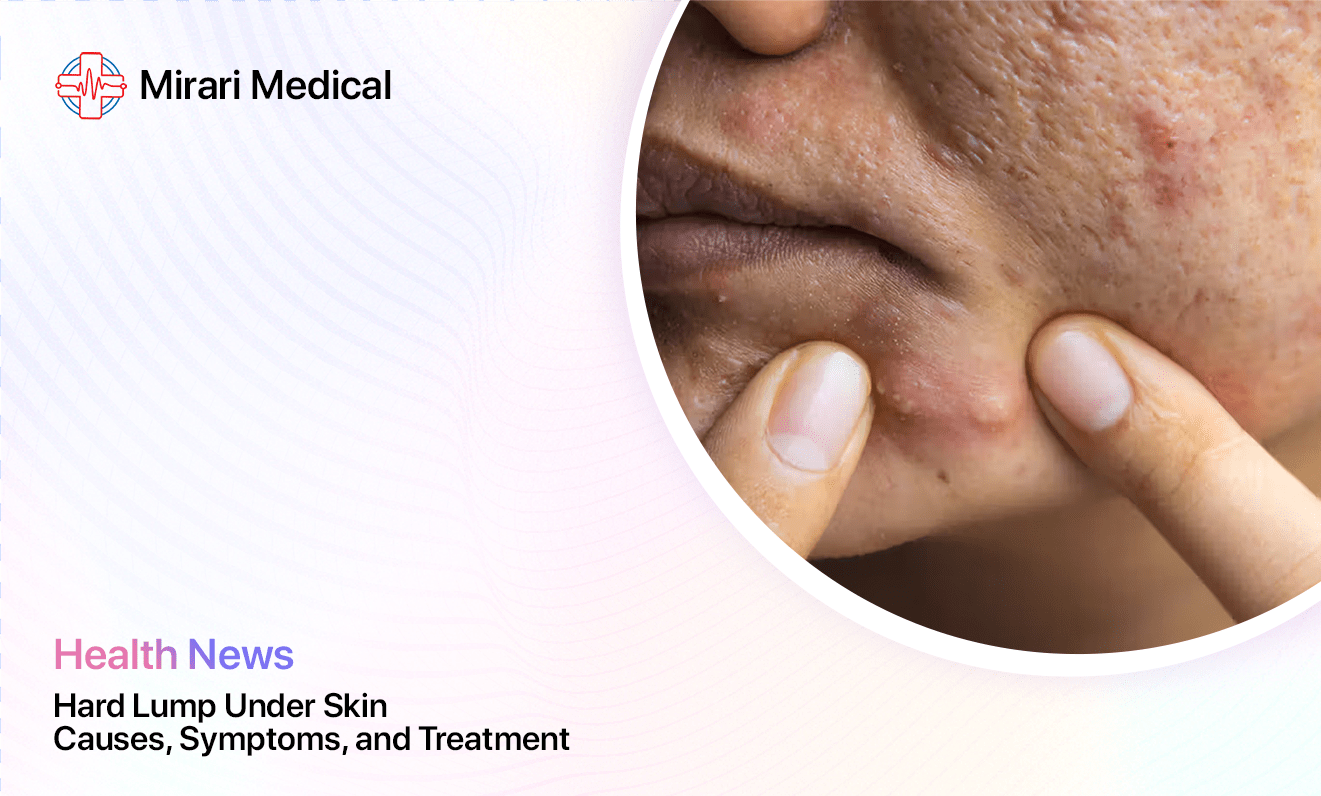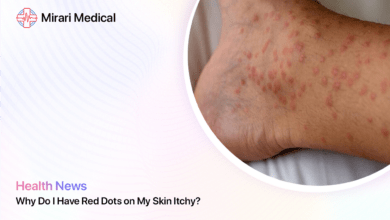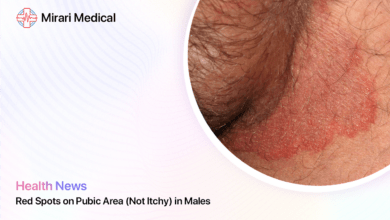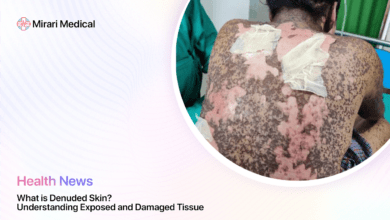Zinc Oxide: A Powerful Treatment for Intertrigo
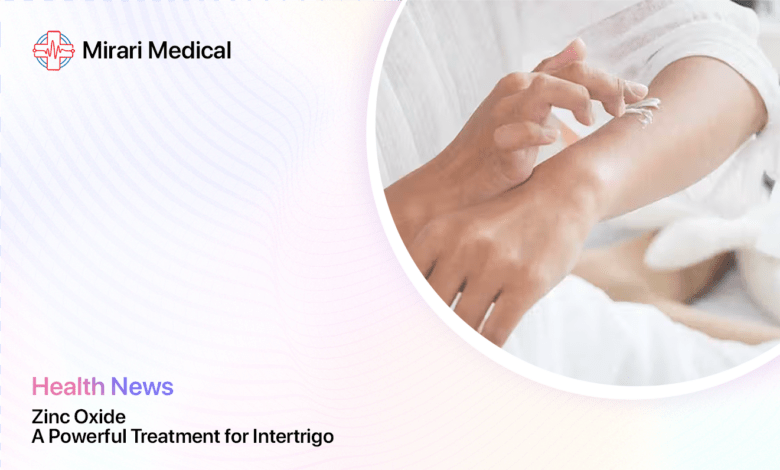
You may be interested
Intertrigo is a common and often uncomfortable skin condition that develops in areas where skin rubs together, such as under the breasts, in the groin, or between fingers and toes. This skin fold irritation is caused by a combination of friction, moisture, and lack of air circulation, which can lead to redness, itching, and even painful sores. While intertrigo can be stubborn and frustrating to deal with, one of the most effective treatments is a simple, over-the-counter remedy: zinc oxide cream.
Zinc oxide has long been used in diaper rash creams for its ability to soothe and protect irritated skin. But this versatile ingredient is also a powerful ally in the fight against intertrigo. In this comprehensive guide, we’ll explore how zinc oxide works to treat intertrigo, what to look for in a zinc oxide cream, and how to use it for best results. We’ll also cover other strategies for managing and preventing this pesky skin condition. Whether you’re dealing with mild chafing or severe moisture-induced dermatitis, understanding the role of zinc oxide can help you find relief and keep your skin healthy and comfortable. Let’s dive in!
What is Intertrigo?
Before we get into the nitty-gritty of zinc oxide treatment, let’s take a closer look at what intertrigo is and what causes it. Intertrigo is a fancy name for a rash that develops in areas where skin rubs together or stays moist for long periods. It’s especially common in people who are overweight, have diabetes, or wear tight-fitting clothing or medical devices like splints or braces.
The most common spots for intertrigo to crop up include[1]:
- Under the breasts
- In the armpits
- In the groin or inner thighs
- Between the toes or fingers
- In the crease of the neck
- Under belly folds
Intertrigo happens when the combination of friction, moisture, and heat breaks down the top layer of skin, causing inflammation and irritation. The damaged skin is then more vulnerable to infection by bacteria or fungi that normally live on the skin’s surface. In fact, many cases of intertrigo are actually a form of fungal intertrigo, caused by an overgrowth of yeast in warm, moist areas.
Symptoms of intertrigo can range from mild to severe and may include:
- Redness or rash
- Itching, burning, or stinging
- Oozing or weeping skin
- Cracked or crusty patches
- Foul odor (especially if infected)
If left untreated, intertrigo can lead to open sores, skin breakdown, and secondary infections. That’s why it’s so important to take steps to manage the condition and prevent it from worsening. And that’s where zinc oxide comes in!
How Zinc Oxide Helps Heal Intertrigo
Zinc oxide is a white, powdery mineral that has been used for centuries to treat a variety of skin conditions. It’s the active ingredient in many diaper rash creams, calamine lotion, and sunscreens. But what makes zinc oxide so effective for treating intertrigo specifically?
It turns out that zinc oxide has several properties that make it uniquely suited for soothing and healing irritated, damaged skin in body folds[2]:
- Forms a protective barrier: When applied to the skin, zinc oxide sits on top of the irritated area and creates a physical barrier against moisture and friction. This helps prevent further damage and gives the skin a chance to heal.
- Reduces inflammation: Zinc has natural anti-inflammatory effects that can help calm the redness, swelling, and discomfort of intertrigo. By reducing inflammation, zinc oxide allows the skin to repair itself more quickly.
- Fights bacteria and fungi: Zinc oxide has mild antimicrobial properties that can help control the growth of bacteria and yeast on the skin’s surface. This is especially important for preventing or treating fungal intertrigo and other secondary infections.
- Promotes healing: Some studies suggest that zinc plays a role in collagen synthesis and cell proliferation, two key processes involved in skin repair and regeneration. By supporting these mechanisms, zinc oxide may help speed up healing of damaged skin.
Thanks to this powerful combination of effects, zinc oxide is one of the most recommended treatments for intertrigo, both by dermatologists and by expert groups like the American Academy of Dermatology[3]. When used consistently and in combination with good hygiene practices, zinc oxide cream can provide significant relief of symptoms and help prevent intertrigo from recurring.
Choosing a Zinc Oxide Cream for Intertrigo
If you’ve ever browsed the diaper rash aisle at your local drugstore, you know that there are tons of different zinc oxide products out there. So how do you choose the right one for treating intertrigo? Here are a few key things to look for:
Zinc Oxide Concentration
Zinc oxide creams come in a range of strengths, typically from 10% to 40%. For intertrigo, you’ll want a cream with a relatively high concentration of zinc oxide – at least 20%, but ideally closer to 40%. Higher percentages provide a stronger protective barrier and more potent anti-inflammatory effects.
Some of the best zinc oxide creams for intertrigo include:
- Desitin Maximum Strength Diaper Rash Paste (40% zinc oxide)
- Boudreaux’s Butt Paste Maximum Strength (40% zinc oxide)
- Triple Paste Medicated Ointment for Diaper Rash (12.8% zinc oxide)
- Balmex Adult Care Rash Cream (11.3% zinc oxide)
Other Beneficial Ingredients
In addition to zinc oxide, look for creams that contain other skin-soothing and protective ingredients such as:
- Petrolatum or dimethicone: These create an occlusive barrier on the skin to lock in moisture and keep out irritants.
- Allantoin or vitamin E: These have anti-inflammatory and skin-conditioning effects.
- Aloe vera or chamomile: These botanical extracts can help calm irritation and redness.
Avoid creams with unnecessary additives like fragrances, dyes, or harsh preservatives that could further irritate the skin.
Consistency and Ease of Use
Zinc oxide creams come in a variety of textures and consistencies, from thick, pasty ointments to thinner, lotion-like formulas. For intertrigo, a thicker cream or paste is generally best, as it will adhere well to the skin folds and create a more durable protective barrier. However, some people find thinner creams easier to spread and less messy to use. The key is to find a product that you’ll use consistently.
You may also want to consider the packaging when choosing a zinc oxide cream. Tubes with narrow tips can make it easier to apply the cream in tight spaces like between toes, while jars or tubs may be better for larger areas like under the breasts. Some brands offer convenient features like flip-top caps or built-in applicators.
Ultimately, the right zinc oxide cream for you is the one that meets your individual needs and preferences. Don’t hesitate to try a few different products until you find your perfect match.
How to Use Zinc Oxide Cream for Intertrigo
Now that you’ve got your trusty tube of zinc oxide cream, it’s time to put it to work! Here’s a step-by-step guide to using zinc oxide to treat intertrigo[4]:
- Gently clean the affected skin with a mild, fragrance-free cleanser or plain water. Pat the skin dry or allow it to air dry completely. Avoid scrubbing or rubbing the skin, which can cause further irritation.
- If the skin is very moist or macerated, you can use a soft cloth or hair dryer on a cool setting to dry it further. Make sure the area is completely dry before applying the cream.
- Apply a generous layer of zinc oxide cream to the irritated skin, making sure to get into all the nooks and crannies of the skin folds. Don’t be afraid to slather it on – the goal is to create a thick, protective barrier.
- Gently smooth the cream onto the skin, but don’t rub it in too vigorously. You want the cream to sit on top of the skin, not be fully absorbed.
- Allow the cream to dry and form a protective film before getting dressed. You can also use a clean gauze pad or soft cloth to separate the skin folds and prevent chafing.
- Reapply the zinc oxide cream at least twice a day, in the morning and at night. You can also reapply it after bathing, sweating, or any time the skin feels irritated or moist.
- Continue using the cream for at least a week after the intertrigo has cleared up to prevent recurrence. If your symptoms persist or worsen after a week of consistent use, see your doctor.
In addition to using zinc oxide cream, there are a few other things you can do to help heal intertrigo and keep it from coming back:
- Keep the affected skin clean and dry. Gently pat it dry after bathing or sweating.
- Wear loose, breathable clothing made from natural fibers like cotton. Avoid tight, restrictive garments.
- Use a hair dryer on a cool setting to air out the skin folds after bathing or exercising.
- Apply a moisture-wicking fabric like InterDry between the skin folds to absorb excess moisture.
- Manage any underlying conditions like obesity or diabetes that can contribute to intertrigo.
Remember, consistency is key when it comes to treating intertrigo. It may take several days or even weeks of regular zinc oxide use to see significant improvement, so be patient and stick with it!
When to See a Doctor for Intertrigo
While zinc oxide cream is a safe and effective treatment for many cases of intertrigo, there are times when you should seek medical attention. Make an appointment with your doctor if[5]:
- Your intertrigo is severe, very painful, or rapidly spreading
- You have signs of infection like pus, yellow crusting, or fever
- The rash doesn’t improve after 1-2 weeks of consistent zinc oxide use
- You have recurring episodes of intertrigo that don’t respond to self-care
- You have diabetes, a weakened immune system, or other health concerns
Your doctor can evaluate the rash, determine if there’s an underlying infection or skin condition, and recommend stronger treatments if needed. They may prescribe oral or topical antibiotics for bacterial infections, or antifungal creams for fungal intertrigo. In some cases, a short course of topical steroid cream may be recommended to reduce inflammation.
If you have frequent or severe bouts of intertrigo, your doctor can also help you identify and manage any contributing factors like obesity, incontinence, or poor circulation. They may recommend lifestyle changes, medications, or other therapies to help prevent future flare-ups.
The bottom line is, don’t hesitate to seek medical care if your intertrigo is not improving with home treatment or is significantly impacting your quality of life. Your doctor is there to help you find relief and get your skin back to its healthy, happy self!
Preventing Intertrigo Flare-Ups
As the old saying goes, an ounce of prevention is worth a pound of cure. While zinc oxide cream is a great treatment for active intertrigo, the best way to manage this condition is to stop it from developing in the first place. Here are some simple strategies you can use to prevent intertrigo flare-ups[6]:
Keep skin clean and dry
Moisture is the enemy when it comes to intertrigo, so it’s important to keep vulnerable areas as clean and dry as possible. Wash daily with a gentle, fragrance-free cleanser and pat skin dry thoroughly. If you’re prone to sweating, use a soft towel or hair dryer on a cool setting to wick away moisture throughout the day.
Wear breathable, moisture-wicking clothing
Tight, restrictive clothing can trap heat and moisture against the skin, creating a perfect environment for intertrigo to thrive. Choose loose, breathable fabrics like cotton or bamboo that allow air to circulate and sweat to evaporate. If you’re active, look for moisture-wicking athletic wear that pulls sweat away from the skin.
Use absorbent powders or creams
After cleansing and drying, apply a thin layer of absorbent powder or cream to areas prone to intertrigo. Look for products that contain cornstarch, tapioca starch, or zinc oxide, which can help keep skin dry and reduce friction. Avoid talc-based powders, which may be irritating or harmful if inhaled.
Manage underlying conditions
Certain health conditions can make you more susceptible to intertrigo by altering your skin’s moisture levels or immune function. If you have diabetes, for example, work with your doctor to keep your blood sugar well-controlled. If you’re overweight, losing excess pounds can help reduce skin folds and improve air circulation. And if you have incontinence, using absorbent pads or briefs can help keep skin dry and prevent irritation.
Practice good hygiene
In addition to keeping skin clean and dry, practicing good overall hygiene can help prevent intertrigo and other skin infections. Wash your hands regularly, especially before touching affected skin. Change out of sweaty clothes promptly after exercising. And if you have cuts or scrapes, keep them clean and covered to prevent bacteria from entering.
By incorporating these preventive measures into your daily routine, you can help keep intertrigo at bay and maintain healthy, comfortable skin. And if you do develop a flare-up despite your best efforts, you’ll be well-equipped to manage it with your trusty zinc oxide cream and other self-care strategies.
Frequently Asked Questions About Intertrigo and Zinc Oxide
Can I use diaper rash cream on intertrigo?
Yes, many diaper rash creams contain zinc oxide as the active ingredient and can be used to treat intertrigo in adults. However, it’s important to choose a cream with a high concentration of zinc oxide (at least 20%) for best results. Some products marketed for adult skin fold rashes may also contain additional ingredients like petrolatum or dimethicone that can enhance the protective barrier.
How long does it take for zinc oxide to work on intertrigo?
With consistent use, you may start to see improvement in your intertrigo symptoms within a few days of starting zinc oxide cream. However, it can take up to 2-3 weeks for the rash to fully clear up, depending on the severity. Be sure to use the cream regularly as directed, even if you start feeling better, to prevent the rash from returning.
Can I use zinc oxide cream on broken skin?
If your intertrigo has caused open sores or cracks in the skin, it’s best to check with your doctor before using zinc oxide cream. In some cases, the cream may further irritate broken skin or delay healing. Your doctor may recommend a different treatment, such as a topical antibiotic or wound dressing, until the skin has healed enough to tolerate zinc oxide.
Can I use other creams or ointments with zinc oxide?
It’s generally safe to use other moisturizing creams or ointments in combination with zinc oxide, as long as they don’t contain any irritating ingredients. In fact, layering a thick, occlusive ointment like petroleum jelly over zinc oxide can help create an even stronger protective barrier. However, it’s best to avoid applying other medicated creams, like antifungal or steroid creams, at the same time as zinc oxide unless directed by your doctor.
How can I tell if my intertrigo is infected?
Signs of an infected intertrigo rash include:
- Increased pain, swelling, or redness
- Pus or yellow/green discharge
- Warm or hot skin
- Red streaks spreading from the rash
- Fever or chills
If you notice any of these symptoms, see your doctor right away. Infected intertrigo usually requires treatment with oral or topical antibiotics to clear the infection and prevent complications.
The Bottom Line
Intertrigo may be a common and frustrating skin condition, but with the right treatment and prevention strategies, it doesn’t have to take over your life. Zinc oxide cream is a safe, effective, and affordable option for soothing irritated skin, reducing inflammation, and creating a protective barrier against moisture and friction. By choosing a high-quality product and using it consistently, along with practicing good hygiene and self-care, you can help your skin heal and keep intertrigo flare-ups at bay.
Remember, while zinc oxide is a powerful tool in your intertrigo treatment arsenal, it’s not a magic bullet. If your symptoms are severe, persistent, or accompanied by signs of infection, don’t hesitate to seek medical advice. Your doctor can help you develop a personalized treatment plan that takes into account your unique needs and health history.
The key to managing intertrigo is patience, consistency, and a proactive approach. By taking steps to keep your skin clean, dry, and protected, you can help prevent this pesky condition from interfering with your daily life and your comfort. And with a trusty tube of zinc oxide cream by your side, you’ll be well-equipped to tackle any flare-ups that do arise with confidence and ease.
So don’t let intertrigo get you down – with a little knowledge, a lot of self-care, and the power of zinc oxide, you can take control of your skin health and get back to living your best, most comfortable life!
Key Takeaways
- Intertrigo is a common skin condition that develops in areas where skin rubs together, causing redness, itching, and irritation
- Zinc oxide cream is an effective treatment for intertrigo thanks to its skin-protective, anti-inflammatory, and antimicrobial properties
- Look for a zinc oxide cream with a concentration of at least 20% for best results in treating intertrigo
- Apply zinc oxide cream generously to affected skin at least twice a day, making sure to cover all skin folds and creases
- To prevent intertrigo, keep skin clean and dry, wear breathable clothing, use absorbent powders or creams, manage underlying conditions, and practice good hygiene
- See a doctor if your intertrigo is severe, not responding to home treatment, or showing signs of infection
- With consistent use of zinc oxide cream and good self-care practices, most cases of intertrigo will improve within 1-2 weeks
So there you have it – your comprehensive guide to using zinc oxide to treat and prevent intertrigo. Armed with this knowledge, you’re well on your way to healthier, happier, more comfortable skin. Just remember to be patient, stay consistent, and don’t be afraid to ask for help when you need it. You’ve got this!
References
- https://www.healthline.com/health/intertrigo
- https://www.ncbi.nlm.nih.gov/pmc/articles/PMC8252709/
- https://www.aad.org/public/diseases/a-z/intertrigo-self-care
- https://www.medicalnewstoday.com/articles/intertrigo
- https://www.mayoclinic.org/diseases-conditions/intertrigo/symptoms-causes/syc-20354718
- https://www.verywellhealth.com/how-to-prevent-intertrigo-5188997
Your trusted source for health info, offering expert advice, news, and tips to stay healthy and informed.

